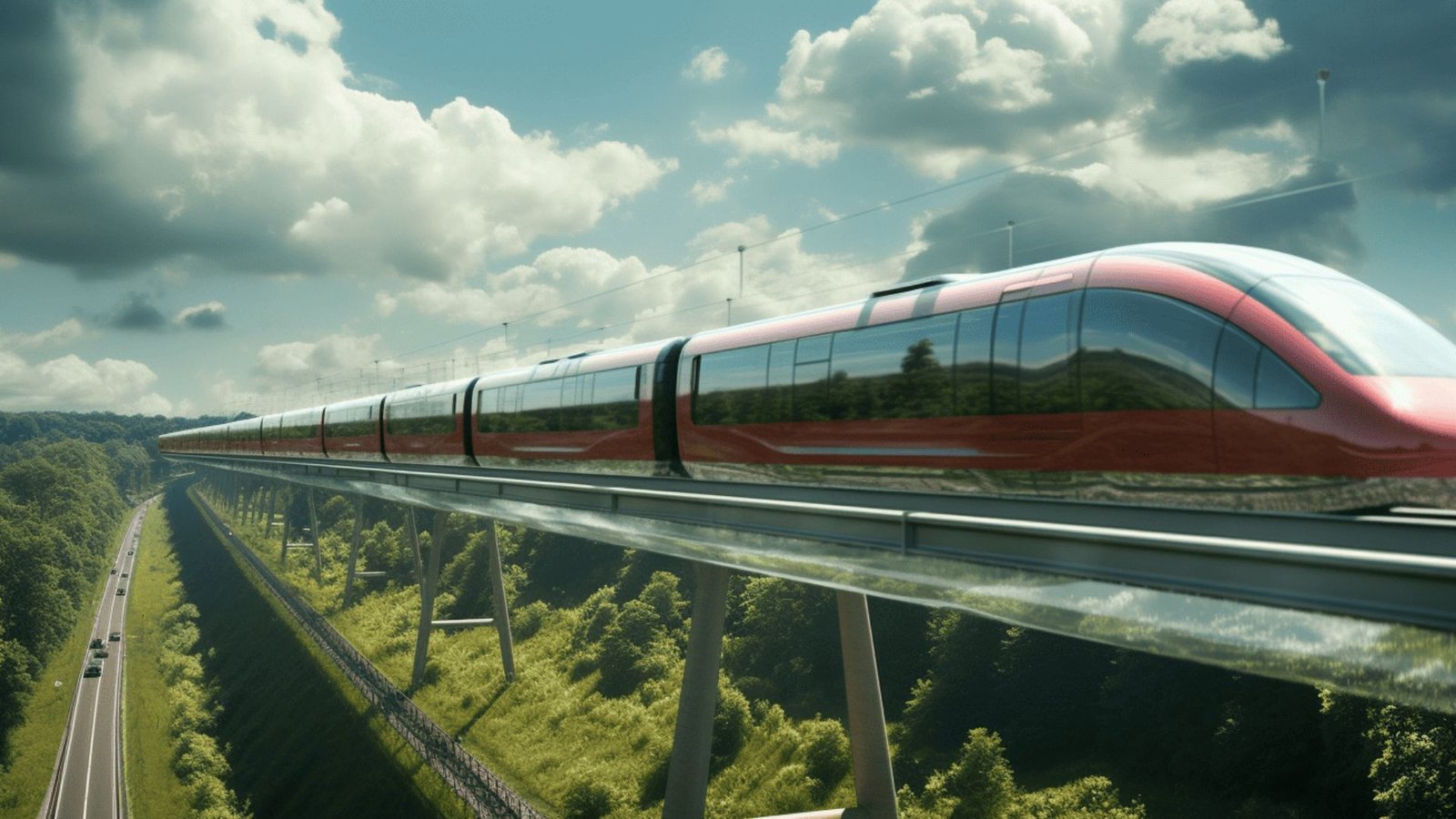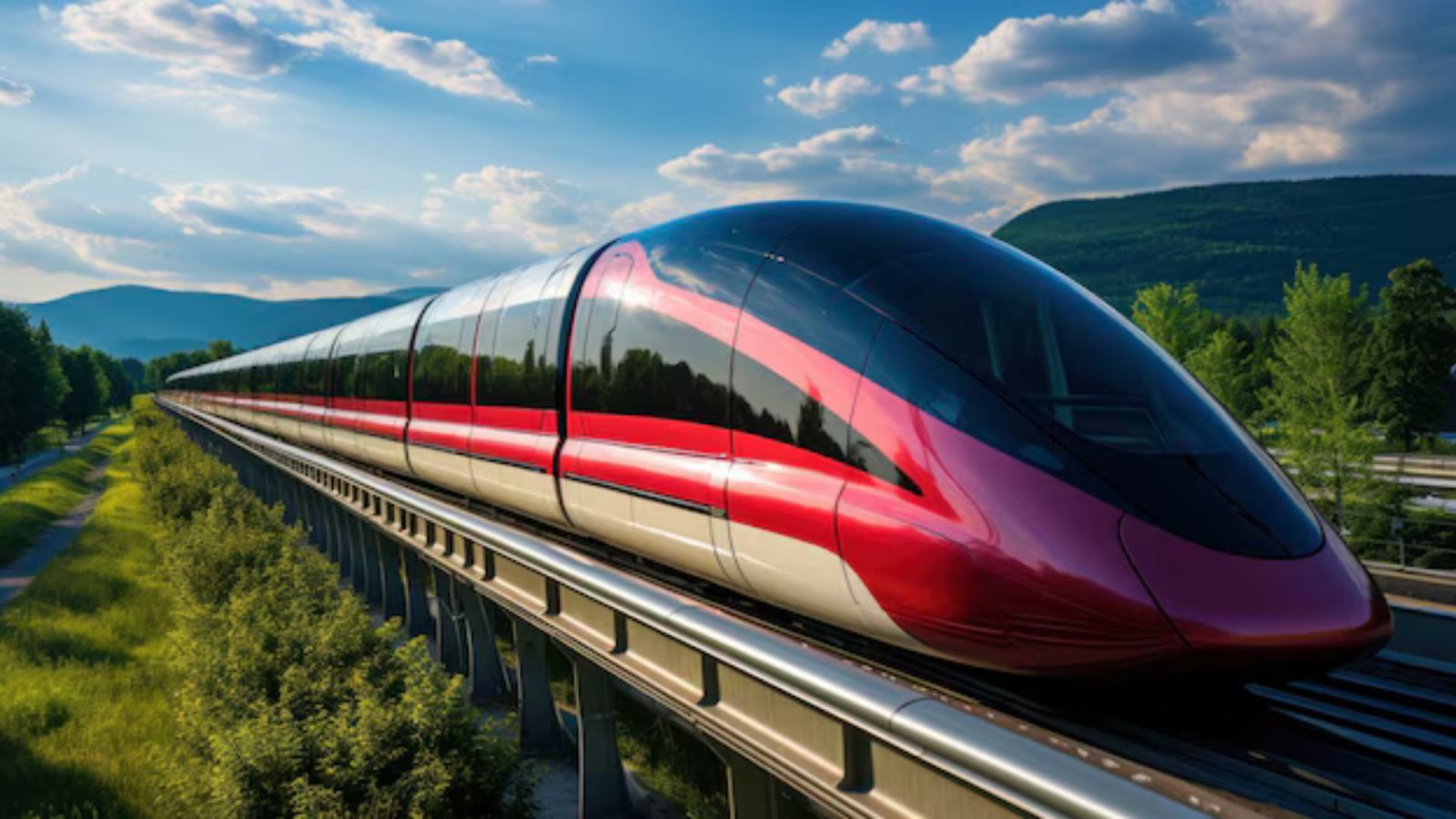In recent years, trains have become a key part of revolutionizing long-distance travel. With advancements in technology, trains are now faster, more comfortable, and more environmentally friendly than ever before. More travelers are choosing trains for long trips, replacing traditional cars and flights for their speed, convenience, and sustainability. In this article, we will explore how rail travel is transforming long-distance journeys, and why trains are quickly becoming the preferred choice for many.

1. Faster and More Efficient Journeys
One of the main ways trains are revolutionizing long-distance travel is by offering faster and more efficient journeys. High-speed trains, like the Shinkansen in Japan and the TGV in France, are changing how we think about distance and time. These trains can travel at speeds over 300 km/h (186 mph), drastically reducing travel times. For example, a journey that would take several hours by car or plane can be completed in less than half the time by train.
Moreover, high-speed rail networks are expanding in many parts of the world. Countries like China, Spain, and Germany are building more high-speed rail lines, which are connecting cities and regions faster than ever before. As rail infrastructure improves, long-distance rail travel becomes a more competitive alternative to air travel.
2. More Comfortable and Spacious Travel
Another reason trains are changing long-distance travel is their comfort. Train travel is inherently more spacious compared to other modes of transport. Unlike planes or buses, where passengers are often cramped into small seats, modern trains offer larger, more comfortable seats with more legroom. Passengers can move freely between carriages, stretch their legs, and even visit a dining car for a meal.
Some long-distance trains, like the Rocky Mountaineer in Canada or the Venetian Express in Europe, offer luxurious accommodations, including sleeper cars and private cabins. These trains are designed with comfort in mind, allowing passengers to sleep, relax, and enjoy the views in style. This makes long-distance train travel more enjoyable for those looking to travel in comfort.
3. Eco-Friendly and Sustainable
Trains are an environmentally friendly alternative to long-distance travel. With growing concerns about climate change, more people are seeking ways to reduce their carbon footprint. Trains, particularly electric ones, are significantly more energy-efficient than cars and airplanes. In fact, rail travel produces fewer carbon emissions per passenger compared to flying or driving.
Many countries are now investing in sustainable rail networks. For example, Sweden and Switzerland are working to make their railways more eco-friendly by using renewable energy sources like wind and solar power. As people become more aware of the environmental impact of travel, trains are quickly becoming a greener alternative for long-distance journeys.
4. No Airport Hassles
Air travel can be a hassle, especially for long-distance trips. Airports are often crowded, security checks are time-consuming, and delays can be frequent. On the other hand, train stations are usually easier to navigate and don’t involve the long lines or stressful procedures that airports do. Passengers don’t have to arrive hours in advance for check-in, and they can board the train with far less stress.
Once on the train, there’s no need to deal with turbulence, cramped spaces, or restricted movement like in airplanes. Train travel offers a more relaxed and enjoyable journey, allowing passengers to focus on the trip rather than the stress of the airport. With direct routes and fewer delays, long-distance train travel is becoming more efficient and hassle-free.
5. Improved Technology and Onboard Amenities
The introduction of new technology has played a major role in transforming long-distance train journeys. Many modern trains are equipped with free Wi-Fi, power outlets, and entertainment options, making it easier for passengers to stay connected and entertained. Some trains even offer luxury services, such as gourmet meals and personal attendants, ensuring passengers enjoy every aspect of their journey.
Furthermore, advanced ticketing systems allow for easy booking and real-time updates, helping travelers stay informed about their journeys. For example, the Eurostar connecting London, Paris, and Brussels provides travelers with mobile apps to track train schedules, manage bookings, and access exclusive offers. The convenience of these services makes train travel much more user-friendly.
6. More Scenic and Relaxing Routes
Long-distance train journeys often offer more scenic and enjoyable experiences than other forms of transport. Train routes pass through picturesque landscapes, like mountains, forests, lakes, and deserts, allowing passengers to take in the views from large panoramic windows. The slow pace of the train journey means travelers can truly relax and enjoy the scenery without worrying about navigating or getting tired from driving.
In countries like Switzerland, Canada, and New Zealand, trains travel through some of the most stunning landscapes in the world. For many travelers, scenic rail journeys are a highlight, offering a unique combination of relaxation and sightseeing.
7. Affordable and Cost-Effective
While long-distance train travel can sometimes be expensive, it is often a more cost-effective option compared to flying. When you factor in the cost of airport parking, baggage fees, and additional travel to and from the airport, train tickets can be a more affordable choice. Plus, many countries offer discounted passes and special deals for rail travel, allowing passengers to save even more.
For example, Europe’s Eurail Pass lets travelers explore multiple countries with one ticket, offering significant savings on long-distance train trips. In North America, Amtrak’s rail passes offer flexibility and affordability for those traveling across the United States and Canada.
8. Better Connectivity Between Cities and Regions
One of the key advantages of rail travel is its extensive network. Trains often connect smaller cities and towns, allowing travelers to visit regions that may not be easily accessible by air or car. This makes train travel ideal for exploring remote and off-the-beaten-path destinations.
Countries like Japan and Germany have efficient train systems that make it easy to travel across vast distances while still enjoying the local culture and scenery. In the future, high-speed rail networks are expected to further improve connectivity, making it even easier for people to travel long distances.
Conclusion
Trains are revolutionizing long-distance travel by offering faster, greener, and more comfortable journeys. With the rise of high-speed trains, improved onboard amenities, and the push for more sustainable travel, trains are quickly becoming a popular choice for travelers worldwide. Whether you’re looking for a relaxing ride with scenic views, a comfortable and eco-friendly alternative, or simply a more efficient way to travel, train travel offers many benefits.
As rail infrastructure continues to grow and technology continues to improve, trains are shaping the future of long-distance travel, making it easier, more enjoyable, and better for the planet.



